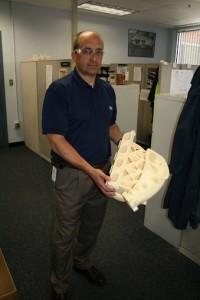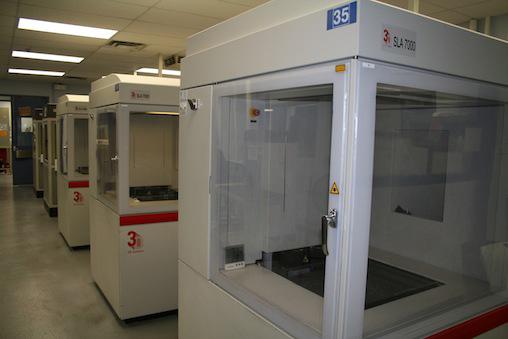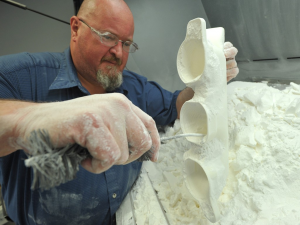What would Henry Ford think about 3D printing? More than likely, the the man who was one of the first to embrace assembly line manufacturing, would also embrace additive manufacturing. What does his company think about the technology now? Actually, according to Harold Sears, a technical specialist in additive manufacturing technology for Ford, the company is now dependent on 3D printing and would not be able to meet its production deadlines if it were not for this incredible technology,
Ford now has five 3D prototyping centers and churns out hundreds of parts per day. The printers use materials ranging from silica to nylon to sand. One of Ford’s favorite examples is the intake manifold, which is the most complicated part of an engine. They say that, using traditional methods, when an engineer is done with creating a prototype for the part on the computer screen, creating the part can take up to four months and cost up to $500,000. Today, using 3D printing for their prototypes, engineers can have their hands on the prototype for the intake manifold within four days at a cost as low as $3,000. One of the most important benefits of using 3D printing for creating parts is that nothing needs to go off-site. With the traditional methods, only machine shops could create the prototype parts, which would take weeks. Now, engineers get their hands on the parts much quicker.
“Companies like 3D Systems and Stratasys are spending huge amounts of money on development,” according to Sears. “So not only are machines and materials getting better, but the process is getting faster and it’s helping drive the overall cost down.”
Ford is not limited to a single type of 3D printing. In fact, they use many different types of printers, including stereolithography (SLA), fused deposition modeling (FDM), selective laser sintering (SLS) and binder jet printing. Different printer technologies play different roles in the production of various prototypes created by the company.
The car company has five different 3D printing centers. Three are in the United States and two in Europe. The facility in Dearborn Heights, Michigan alone, prints around 20,000 parts per year. Considering that the entire company only printed approximately 5,000 parts in total in 2004, the technology is certainly catching on.
“3D printing presents a great opportunity for overall manufacturing”, says Sears. “The technique is ideal for test parts, or niche production applications, that go through frequent development changes”, he says.
Let us know what you think about this transition in manufacturing, at the 3DPB.com forum thread for Ford. Check out the video below provided by ford, detailing their use of 3D printing.
This story uses quotes and pictures from Computerworld’s tour of the Dearborn, Michigan facility.
Subscribe to Our Email Newsletter
Stay up-to-date on all the latest news from the 3D printing industry and receive information and offers from third party vendors.
You May Also Like
Profiling a Construction 3D Printing Pioneer: US Army Corps of Engineers’ Megan Kreiger
The world of construction 3D printing is still so new that the true experts can probably be counted on two hands. Among them is Megan Kreiger, Portfolio Manager of Additive...
US Army Corps of Engineers Taps Lincoln Electric & Eaton for Largest 3D Printed US Civil Works Part
The Soo Locks sit on the US-Canadian border, enabling maritime travel between Lake Superior and Lake Huron, from which ships can reach the rest of the Great Lakes. Crafts carrying...
Construction 3D Printing CEO Reflects on Being Female in Construction
Natalie Wadley, CEO of ChangeMaker3D, could hear the words of her daughter sitting next to her resounding in her head. “Mum, MUM, you’ve won!” Wadley had just won the prestigious...
1Print to Commercialize 3D Printed Coastal Resilience Solutions
1Print, a company that specializes in deploying additive construction (AC) for infrastructure projects, has entered an agreement with the University of Miami (UM) to accelerate commercialization of the SEAHIVE shoreline...
































